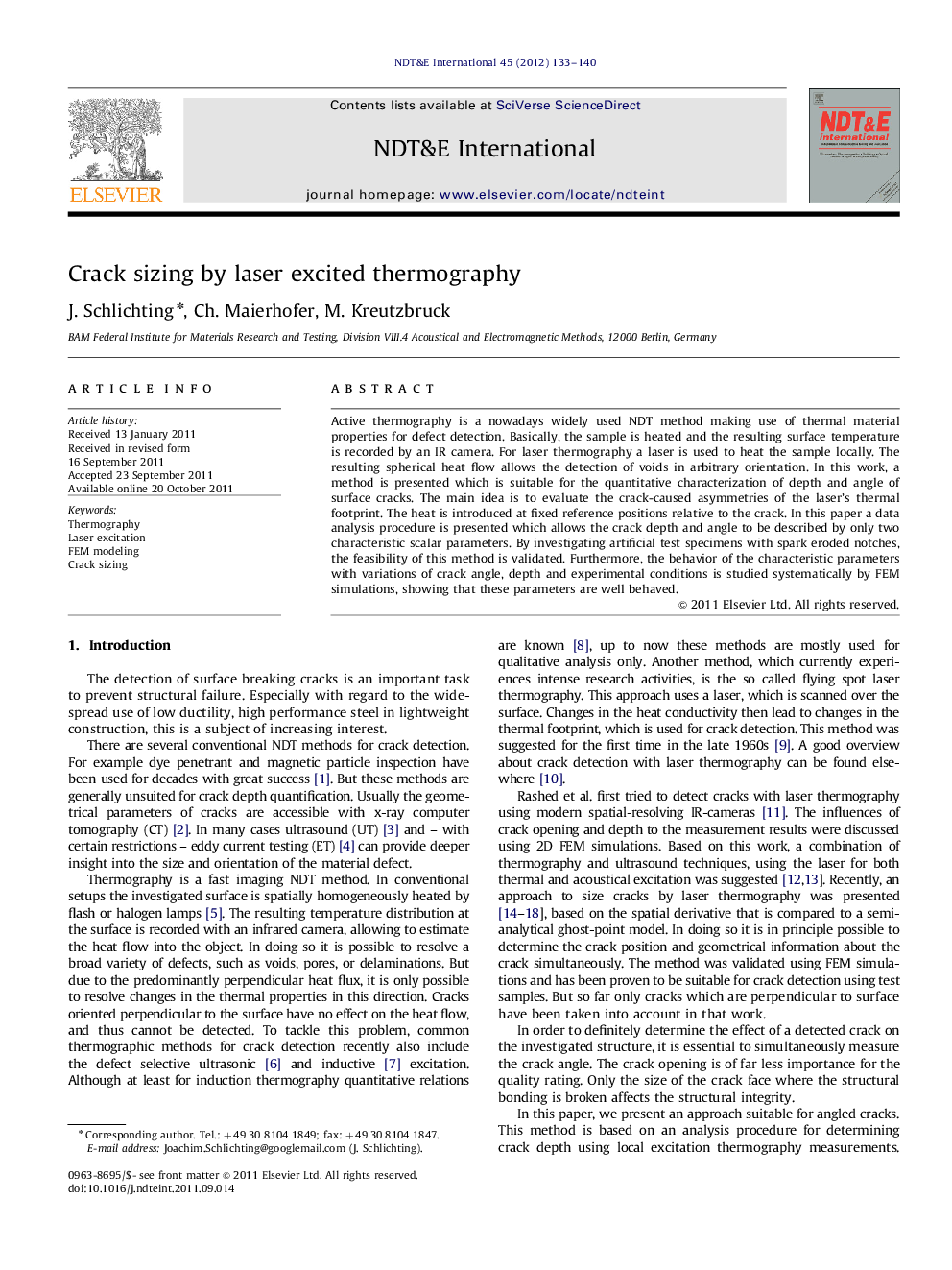| Article ID | Journal | Published Year | Pages | File Type |
|---|---|---|---|---|
| 295361 | NDT & E International | 2012 | 8 Pages |
Active thermography is a nowadays widely used NDT method making use of thermal material properties for defect detection. Basically, the sample is heated and the resulting surface temperature is recorded by an IR camera. For laser thermography a laser is used to heat the sample locally. The resulting spherical heat flow allows the detection of voids in arbitrary orientation. In this work, a method is presented which is suitable for the quantitative characterization of depth and angle of surface cracks. The main idea is to evaluate the crack-caused asymmetries of the laser's thermal footprint. The heat is introduced at fixed reference positions relative to the crack. In this paper a data analysis procedure is presented which allows the crack depth and angle to be described by only two characteristic scalar parameters. By investigating artificial test specimens with spark eroded notches, the feasibility of this method is validated. Furthermore, the behavior of the characteristic parameters with variations of crack angle, depth and experimental conditions is studied systematically by FEM simulations, showing that these parameters are well behaved.
